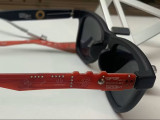During our Knowledge and Demo Day on 10 October (2024), Guus Kruijssen and Rombout Huisman (Province of North Holland) led a working session on their recent scenario studies – Smart Mobility North Holland 2050. In this report, I will share the four ‘Context’ scenarios they developed, the process, and the discussions with the session participants.
Objectives of the Scenario Study
What do we actually mean by future visions and scenarios? What are the different types, and how can they be used? A discussion among the participants quickly highlighted the many different motivations, forms, and use cases. Rombout and Guus began by explaining their aim for this study.
The province of North Holland plays various roles in the field of mobility as a policymaker, road manager, and concession provider. Given the major challenges related to housing, CO2 emissions reduction, and road safety, their perspective on the future of mobility revolves around Reducing (travel), Improving (travel options), and Changing (travel behaviour). This perspective forms the basis for developing, operationalising, and maintaining their strategy – a cycle that spans approximately 50 years. However, digital developments and innovations are making the world change faster than ever, necessitating greater awareness of possible contextual changes. The key question is: how do the choices we make now relate to the different possible futures?
To explore this, a team of colleagues embarked on developing four challenging context scenarios. Working with internal and external experts, they moved from an environmental analysis and contextual factors to scenarios and strategic insights. The process and outcomes were kept administrative and had no political or policy-driven focus. The result is not a set of visions to choose from but rather a representation of various developments and challenges that may arise, to which you can assess your own projects and actions against.
The Four Scenarios
Four distinct context scenarios were developed. Here is a summary and a few key aspects of each:
- Steady Traffic (Doorgaand verkeer) A slow shift towards a green economy, benefiting only the Amsterdam Metropolitan Area (MRA). The population grows to 3.7 million. Cars remain dominant, transitioning gradually to electric, but roads and trains stay congested. Digitalisation and innovation progress slowly, with limited impact on efficiency and accessibility.
- Turbulent Weather (Rukwinden) Ongoing shocks and international instability, with the US leaving NATO and significant climate change. The population increases to 3.1 million. Fuel crises accelerate electrification, but investment focuses on priorities like the navy. Technological scepticism grows due to data breaches, impacting accessibility.
- Our Own Path (Eigen weg) The Netherlands withdraws from international cooperation and leaves the EU, focusing on healthcare, circularity, and local production. The economy contracts due to trade restrictions and brain drain, and the population decreases to 2.6 million. Fewer traffic jams, but cars remain significant alongside increased regional public transport. Distrust in innovations and sustainability rises, with informal sharing preferred over commercial options.
- Transition (Overstappen) Climate change accelerates transition and AI development. The population stabilises at 3.1 million. Non-sustainable sectors disappear, and reduced traffic results from digitalisation and virtualisation. Space is primarily used for energy infrastructure, and circular processes increase. The EU and the national government push for innovations like autonomous transport and shared mobility. Ownership is limited to the wealthiest, and digital infrastructure becomes a priority.
Outcomes and Follow-Up
Rombout and Guus guided the group through the process and results of these scenario studies. We discussed the developments and contextual factors used in the study, and considered if anything was missing. They openly shared their approach and how they plan to use these insights to assess their own policies and projects, and welcomed questions and suggestions from the group. There was also room for discussing the challenges. Because, while people can easily align on scenarios, opinions can still vary greatly on how we should act on them now.
Many of our partners are already working with future visions and scenarios. See, for instance, our report on a session with trendwatchers from the Municipality of Amsterdam. The purpose, process, and impact on policy, projects, and actions vary across organisations. However, there was agreement that sharing methods and scenarios is valued, particularly in a neutral setting like our innovation network. It fosters mutual understanding and offers valuable lessons from each other's research methods and practical applications. In the coming period, we will explore how we can contribute to this in our network on various transition themes.
Would you like to know more about this study from the Province of North Holland? Feel free to send me a message, and I will connect you. Interested in brainstorming about how we can approach this more frequently or systematically within the network? Let me know at pelle@amsterdaminchange.com.





